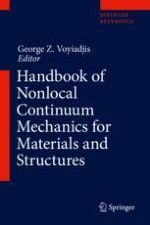2019 | OriginalPaper | Chapter
38. Dynamic Brittle Fracture from Nonlocal Double-Well Potentials: A State-Based Model
Authors : Robert Lipton, Eyad Said, Prashant K. Jha
Published in: Handbook of Nonlocal Continuum Mechanics for Materials and Structures
Publisher: Springer International Publishing
Activate our intelligent search to find suitable subject content or patents.
Select sections of text to find matching patents with Artificial Intelligence. powered by
Select sections of text to find additional relevant content using AI-assisted search. powered by
